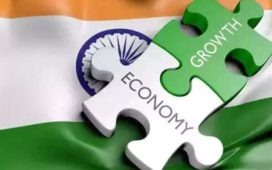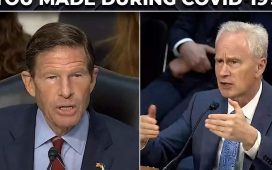Signage for the Reserve Bank of India (RBI) in Mumbai, India, on Friday, April 5, 2024.
Dhiraj Singh | Bloomberg | Getty Images
India’s central bank expectedly kept the benchmark interest rate unchanged at 6.50% on Friday as it struggles to contain rising inflation without hurting growth in Asia’s third-largest economy.
The decision came in line with economists’ expectation in a Reuters poll, as India’s consumer prices inflation surged to a 14-month high of 6.21% in October, significantly higher than the central bank’s target of 4% and also above its tolerance ceiling of 6%.
Reserve Bank of India Governor Shaktikanta Das said the central bank had revised India’s GDP growth outlook for fiscal year 2025 down to 6.6% — RBI had forecast 7.2% growth in October — adding that the slowdown in the domestic economy had “bottomed out” in the September quarter.
The central bank also announced a cut to banks’ cash reserve ratio by 50 basis points to 4.0% to bolster liquidity in the economy.
The RBI has held the interest rate steady since February last year, however, a sharper-than-anticipated slowdown in India’s economic growth has made the central bank’s task tougher.
In the July to September period, India’s economy grew 5.4% from a year ago, drastically missing Reuters-polled economists’ expectation of 6.5%, and marked the slowest pace in nearly two years.
The slowdown has prompted worries that the RBI’s restrictive policies may be putting the economy at risk of missing its forecast of 7.2% growth for the year through March 2025.
Both Finance Minister Nirmala Sitharaman and Trade Minister Piyush Goyal have reportedly called for lower borrowing costs to bolster lending demand and support a slowing economy.
“At a time when we want industries to ramp up and build capacities, bank interest rates will have to be far more affordable,” the finance minister said at an event in Mumbai last month.
The RBI chief Shaktikanta Das, however, has ruled out an immediate rate cut, though the central bank shifted its policy stance to “neutral” from a more restrictive “withdrawal of accommodation” in the October meeting.
Das, whose second term leading the central bank will end later this month, had said in October that an immediate interest rate cut can be “very premature” and “very, very risky”, and that he was in no hurry to join the global central banks in easing.
Indian rupee fell to record lows against the U.S. dollar earlier this week, LSEG data showed, and any monetary easing measures would likely put further pressure on the currency and likely trigger capital outflows.
Following the announcement on Friday, the rupee was little changed at 84.666 against the greenback. Nifty 50 index erased earlier losses to trade nearly flat.
The benchmark index has risen modestly since the GDP release last Friday and is up 13.7% since the start of the year. For comparison, the MSCI Asia ex Japan index — which allocates nearly 23% of its funds to India — is down around 12% so far this year.
Indian bonds have rallied over the past few days with the 10-year benchmark yield dropping to 6.677% on Thursday, its lowest level since February 2022, according to LSEG data.
The 10-year yield rose 3.1 basis points to 6.711% after the RBI decision.
— CNBC’s Amala Balakrishner contributed to this report.











